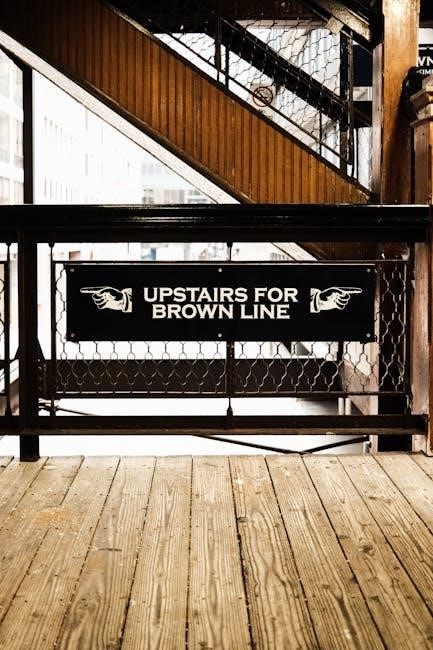shoe size guide us to aus
Welcome to our comprehensive guide on converting US shoe sizes to Australian sizes. Understanding shoe size differences is crucial for a perfect fit, especially when shopping internationally. This guide will help you navigate the conversion process seamlessly and provide tips for accurate measurements to ensure your shoes fit comfortably every time.
Understanding the Importance of Shoe Size Accuracy
Accurate shoe sizing is essential for comfort, proper fit, and overall satisfaction. Incorrect sizes can lead to discomfort, foot pain, or even long-term health issues like bunions or calluses. When converting US to Australian shoe sizes, precision is key, as even a small discrepancy can significantly affect the fit. For instance, women’s sizes in the US and Australia are identical, while men’s sizes differ due to the UK-based system used in Australia. This discrepancy means that a US men’s size 9 often corresponds to an Australian size 8. Understanding these nuances ensures a better shopping experience, especially when purchasing online. Always measure your foot length and refer to conversion charts to avoid sizing mistakes. Remember, correct sizing enhances performance and comfort, making it vital for everyday wear or specialized footwear.
Overview of US and Australian Shoe Size Systems
The US and Australian shoe size systems differ in their structures, particularly for men and women. In the US, shoe sizes for both men and women are based on the same scale, with women’s sizes starting at 4 and increasing in 1/3 increments. Australian women also follow the US scale, meaning a US size 8 is the same as an Australian size 8. However, Australian men’s sizes align with the UK system, which is approximately one size smaller than US sizes. For example, a US men’s size 10 corresponds to a UK/AU size 9. This system can cause confusion, especially when shopping internationally. Both systems measure foot length but use different starting points and scaling methods. Understanding these distinctions is crucial for accurate conversions and ensuring the best fit when purchasing footwear across regions.

Differences in US and Australian Shoe Sizing

Australia and the US use different shoe sizing systems, especially for men. Australian men’s sizes follow the UK system, which is one size smaller than US sizes. Women’s sizes, however, are identical in both countries, simplifying conversions for women but requiring careful adjustments for men when shopping across regions.
Historical Background of Shoe Sizing Systems
The history of shoe sizing systems dates back to the 14th century when Europe first introduced standardized measurements. The earliest systems were based on the barleycorn, a unit of length used in England, with one barleycorn equaling 1/3 of an inch. This system was adopted by various countries but evolved differently over time. The US developed its own sizing system, while the UK and Australia followed a similar path. The lack of global standardization led to the diverse systems we see today. The International Organization for Standardization (ISO) attempted to unify measurements, but cultural and industrial practices prevented widespread adoption. Today, these historical differences remain, making conversions between systems like US and Australian essential for accurate fits.
Key Differences Between US and Australian Shoe Sizes
The primary difference lies in the systems they follow. Australian women’s shoe sizes align with the US system, meaning a US women’s size 8 is the same as an Australian women’s size 8. However, Australian men’s sizes are based on the UK system, which is one size smaller than the US. For example, a US men’s size 10 corresponds to an Australian men’s size 9. This discrepancy can lead to confusion, especially when shopping internationally. Additionally, some Australian brands, like Blundstone, may have unique sizing quirks, such as half sizes affecting width rather than length. Understanding these distinctions is crucial for accurate conversions and ensuring the best fit. Always refer to size charts and brand-specific guides to avoid sizing mistakes when transitioning between US and Australian shoe sizes.

US to Australian Shoe Size Conversion Guide
This guide provides detailed charts for converting US shoe sizes to Australian sizes for men, women, and kids. Easily navigate the conversion process with accurate and reliable size charts to ensure the perfect fit every time.
Men’s Shoe Size Conversion Chart (US to AU)
Converting men’s shoe sizes from US to Australian requires understanding that Australian sizes follow the UK system, differing from US sizing. For men, US sizes are generally one size larger than Australian sizes. For example, a US size 9 corresponds to an AU size 8. This chart provides a clear comparison:

- US 6 = AU 5
- US 7 = AU 6
- US 8 = AU 7
- US 9 = AU 8
- US 10 = AU 9
- US 11 = AU 10
- US 12 = AU 11
- US 13 = AU 12
When shopping, remember to subtract one size from your US size to find the equivalent AU size for the best fit. Always refer to the specific brand’s sizing chart for accuracy, as some brands may vary slightly.
Women’s Shoe Size Conversion Chart (US to AU)
For women, converting US shoe sizes to Australian sizes is straightforward, as both systems use the same numbering. This means a US women’s size 6 is equivalent to an AU women’s size 6. Below is a handy chart for reference:
- US 4 = AU 4
- US 5 = AU 5
- US 6 = AU 6
- US 7 = AU 7
- US 8 = AU 8
- US 9 = AU 9
- US 10 = AU 10
- US 11 = AU 11
This alignment simplifies shopping for women’s shoes between the two countries. However, always check the specific brand’s sizing chart, as minor variations can occur. This ensures the best fit and avoids sizing discrepancies.
Kids’ Shoe Size Conversion Chart (US to AU)
Converting kids’ shoe sizes from US to Australian systems requires attention to the specific sizing conventions for children. Unlike women’s sizes, which align directly, kids’ sizes differ slightly due to varying growth patterns and regional standards. Below is a detailed chart to guide you:
- US Junior 1 = AU Junior 1
- US Junior 2 = AU Junior 2
- US Junior 3 = AU Junior 3
- US Junior 4 = AU Junior 4
- US Junior 5 = AU Junior 5
- US Junior 6 = AU Junior 6
- US Junior 7 = AU Junior 7
For infant sizes, the conversion is based on foot length in centimeters. For example, a US infant size 4 (12.7 cm) corresponds to an AU infant size 4 (12.7 cm). Always measure your child’s foot length for accurate sizing, as brand-specific variations may exist. This ensures the best fit for growing feet.

Frequently Asked Questions
This section addresses common queries about US to AU shoe size conversion, providing clarity on sizing differences and offering practical solutions for everyday shoe-buying dilemmas.
Why Do Shoe Sizes Vary Between Countries?
Shoe sizes differ between countries due to historical and regional standards. The US uses a system based on the Brannock Device, while Australia follows the UK system for men’s sizes. This discrepancy arises from varying measurement methods and starting points, with some countries basing sizes on foot length and others on shoe length. Global standardization efforts have been challenging, as each nation adapted its own system before international coordination began. Additionally, cultural preferences for fit and footwear types contribute to these variations. Understanding these differences is essential for accurate conversions, ensuring a comfortable and proper fit when shopping across borders.
How to Measure Foot Length for Accurate Sizing
Measuring your foot length accurately is essential for determining your shoe size. To do this, stand barefoot on a flat surface with your weight evenly distributed. Place a ruler or measuring tape along the longest part of your foot, from the back of the heel to the tip of the longest toe. Ensure your foot is relaxed and not arched. Record the measurement in centimeters or inches. For the most accurate fit, measure both feet, as they may differ slightly. Use this measurement to compare with size charts, keeping in mind that different countries and brands may have slight variations in sizing standards. This method ensures a reliable starting point for converting sizes between US and Australian systems, helping you find the perfect fit every time.
How to Convert US Shoe Size to Australian Size
Converting US shoe sizes to Australian sizes involves understanding the differences in their sizing systems. For women, US and Australian sizes are identical, so no conversion is needed. Women’s US size 8, for example, is the same as Australian size 8. Men’s sizes, however, differ as Australian sizes align with the UK system, which is smaller than the US system by about one size. To convert men’s sizes, subtract one from the US size (e.g., US men’s size 10 becomes Australian size 9). To ensure accuracy, measure your foot length and compare it to the brand’s size chart, as some brands may have slight variations. This method provides a reliable guide for finding the correct fit when converting between US and Australian shoe sizes.

Popular Brands and Their Sizing Quirks
Blundstone adds width in half sizes, not length. RM Williams follows UK sizing, requiring men to size down. Western Boot Barn uses US sizing but offers wider fits for comfort.
Blundstone Sizing Guide
Blundstone shoes, an Australian favorite, have unique sizing features. Unlike most brands, a half size in Blundstone doesn’t increase length but adds width. For instance, a size 7.5 is the same length as a 7 but offers more room for wider feet or thicker socks. When converting from US sizes, women should subtract 3 sizes (e.g., US 8 to AU 5), while men subtract 1 size (e.g., US 10 to AU 9). Some customers find they need to size down further, so trying shoes or knowing foot length in centimeters is recommended. Blundstone provides conversion charts, making it easier to find the perfect fit. If between sizes, opting for a half size can provide extra width without sacrificing length, ensuring comfort without compromising style.
RM Williams Sizing Guide

RM Williams, a renowned Australian brand, follows the UK sizing system for men, which is one size smaller than US sizes. For example, a US size 9 corresponds to a UK/AU size 8. Women’s sizes, however, align directly with US sizing. RM Williams boots are known for their slim fit, particularly in the toe box, so those with wider feet may prefer the ‘H’ width for extra comfort. When converting, men should subtract one size from their US size, while women can use their US size directly. For optimal fit, ensure the boot is snug around the heel and midfoot but allows slight movement in the toes. Referencing their detailed size chart or trying shoes in person is highly recommended for accuracy.

Western Boot Barn Sizing Guide
Western Boot Barn, an Australian brand, offers a unique sizing approach that blends US and European systems. Unlike most Australian brands, they primarily use US sizing for their footwear, with some styles following European measurements. To ensure the best fit, they recommend starting with your standard Australian dress shoe size rather than athletic shoes, as these can vary in fit. Western Boot Barn also offers wider widths, such as ‘C’ and ‘W,’ catering to those with broader feet. When purchasing, consider the specific sizing chart provided for each style, as there may be slight variations. This tailored approach ensures a comfortable and accurate fit, making Western Boot Barn a reliable choice for shoppers seeking durable and well-fitting boots.

Additional Tips for Buying Shoes
When buying shoes, ensure accurate sizing by measuring your foot length and comparing it to size charts. Try shoes in the afternoon, as feet tend to swell throughout the day, ensuring a comfortable fit. Check for width options, especially if your feet are wider or narrower than average. Consider the materials and cushioning for added comfort. Lastly, read reviews and sizing feedback from other customers to avoid potential size mismatches and ensure the best fit for your needs.
How to Avoid Sizing Mistakes When Shopping Online
Avoiding sizing mistakes when shopping online requires careful planning and attention to detail. Always refer to the brand’s specific size chart, as sizing can vary between brands and regions. Measure your foot length and compare it to the chart provided by the retailer. Consider the width of your feet, as some brands offer options like narrow, medium, or wide fits. Read customer reviews to gain insights into how a particular shoe runs—whether it’s true to size, small, or large. Look for features like adjustable straps or cushioning that can enhance comfort. If unsure, opt for a size that accommodates your foot length and width comfortably. Finally, check the return and exchange policies to ensure you can easily return or exchange shoes that don’t fit perfectly.
Understanding Shoe Widths and Fit
Understanding shoe widths and fit is essential for optimal comfort and performance. Shoe widths vary, with common options including narrow, medium, wide, and extra-wide. Medium width is the most common and suits average foot shapes. Narrow widths are designed for slimmer feet, while wide widths accommodate broader feet or those needing extra room for comfort. Some brands offer extended width options, ensuring a better fit for diverse foot shapes. Proper fit ensures toes aren’t cramped and heels stay secure. When shopping online, consider your foot shape and preferred comfort level. If you typically experience tightness in standard widths, opting for a wider size may improve comfort. Always refer to the brand’s sizing chart, as width measurements can vary slightly between brands. Prioritizing the right width ensures a more enjoyable and supportive shoe-wearing experience.
Mastering the US to Australian shoe size conversion ensures a perfect fit and seamless shopping experience. By understanding the differences and using conversion charts, you can confidently navigate international sizing systems and enjoy your ideal footwear choice every time.
Final Thoughts on US to Australian Shoe Size Conversion
Converting US to Australian shoe sizes requires attention to detail, especially for men, as their sizes align with the UK system, differing from women’s sizes, which match US sizing. Using conversion charts and understanding brand-specific quirks, like Blundstone’s width-focused half sizes, ensures a perfect fit. Measuring foot length and considering width options, such as RM Williams’ H width for narrower feet, enhances comfort. Western Boot Barn’s mix of US and European sizing highlights the importance of checking specific brand guides. By mastering these conversions and tips, shoppers can avoid sizing mistakes and enjoy a seamless international shoe-buying experience. Always refer to brand charts and consider foot measurements for the best fit. Happy shopping!